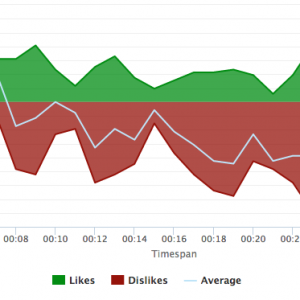The Lean Approach To Marketing Research
Any collection of tactics used to acquire information and better understand a company’s target market is known as business market research (or marketing research). Businesses utilize this data to improve product design, increase ad performance, user experience and develop a marketing strategy that generates high-quality leads and boosts conversion rates. For businesses that are launching their first marketing campaigns, or for larger orgs wanting to measure their marketing efforts effectiveness, brand tracking measurement and data collection for business intelligence software is also critical to use efficient research technologies.
It’s hard to understand your users without researching. You may have a basic understanding of who they are and what they require, but you must be willing to delve deeper if you want to earn their commitment. Aside from that, market research companies often emphasize that research beats assumptions, trends, and so-called best practices.
You’ll be less likely to get dragged in the wrong path if you listen to your users and focus on their customer experience. With all these reasons that make marketing research so important, it is crucial to learn its lean-approach. We will be talking about this more in the succeeding sections so keep reading.
Advantages of Lean Market Research
1. Efficient
One of the top benefits of lean market research, according to survey respondents, is more efficient company operations. Marketing teams have a mix of planned project work and unscheduled work, and balancing can be difficult, especially if you don’t have a system to do so.
Lean marketing teams concentrate on streamlining and improving any repeatable process so that they may devote more time and resources to unplanned work and strategic decision-making. Optimizing the engine’s efficiency improves the overall performance of the vehicle.
2. Cost-effective
There is no longer a need to hire an expensive marketing firm to get things started with lean market research. Suppose certain expenditures are incurred along the way, and we are seen to evaluate the value of market research in monetary terms. In that case, the budget is less likely to be considered as a cost center and more likely to be seen as a source of revenue and cost-cutting ideas.
By suggesting projects that aid the market research process, you may guarantee that your focus mirrors the demands of the business to achieve efficiency and cost savings.
3. Competitive
Many long-lasting new firms have owners who perform regular market research to understand their target market better, uncover consumer problems, and discover realistic competition. Measuring up your business potential is the simplest way for entrepreneurs to stay on top of industry developments and preserve a competitive edge.
Market research can be conducted at any point in a company’s life cycle, from pre-launch to post-launch. Knowing your market better from the outset will help you develop a sound business strategy for establishing and growing your brand into one that outperforms the competition.
With lean market research, competitiveness is put in place. Quick, powerful insights that are gained from this study can place your products on the cutting edge. This considers the fact that whatever technique a team uses to release a product, it is critical to know that the new product will have a long-term, viable market and that the company will sustain a competitive advantage in an ever-changing landscape.
5 Common Market Research Questions
When you interview your users, the following questions can help you learn more about them. Of course, these are general questions, so feel free to personalize them to suit your needs.
1. Who are you and what do you do?
It’s an excellent place to start because it’ll tell you everything you need to know about your users’ demographics (age, race, gender, profession, education, and so on), but it’s not the end-all of market research. Later on, you’ll get to the meatier and more precise questions.
Depending on your business model (for example, business-to-business marketing is usually more focused on someone’s occupation than business-to-consumer marketing), how you ask this question and what you want to know will differ.
2. What does your day look like?
This question can help you gain a better understanding of their day-to-day activities and challenges. It will help you empathize with them, and you could learn something valuable about their purchasing habits.
3. Do you ever purchase [product/service type]?
Asking your users this question will require only either a “yes” or “no” from them. If they choose “yes” as their answer, you can proceed by asking them the next question.
4. What problem were you trying to solve, or what goal were you trying to achieve?
This inquiry gets right to the heart of their problem and why they might be prepared to pay for your solution. This can help you gain more insights into your customers’ needs, which can also significantly represent your target market. Doing this will enable you to gain more insight into the needs of your clientele better.
5. Take me back to the day when you first decided you needed to solve this kind of problem or achieve this goal.
This question is deemed to be the golden one among the ones mentioned above. It allows you to get inside your consumers’ thoughts and discover what they were thinking on the day they opted to spend money to address a specific problem they have in hand.
You should answer all of the key facts you need to comprehend them if only you take your time with this question and go deeper where it makes sense.
Final Thoughts
You won’t be able to plan in a vacuum if you do your research, which makes the lean approach to marketing research is something all businesses should consider integrating. Your staff may be fantastic, but you and your coworkers will never be able to experience your product in the same manner that your customers do. Customers may use your product in unexpected ways, and features that appear clear to you may be confusing to them.
Overplanning and failing to test your assumptions is a waste of time, money, and effort, as you will almost certainly need to make modifications once your untested plan is implemented. Most importantly, keep in mind that the only way to win is to obsess over your users. You will lose potential consumers to someone who cares significantly about enhancing user experience.








